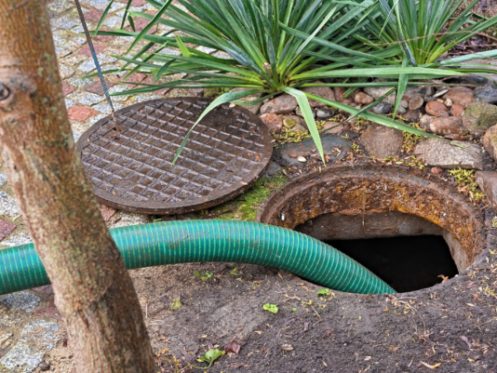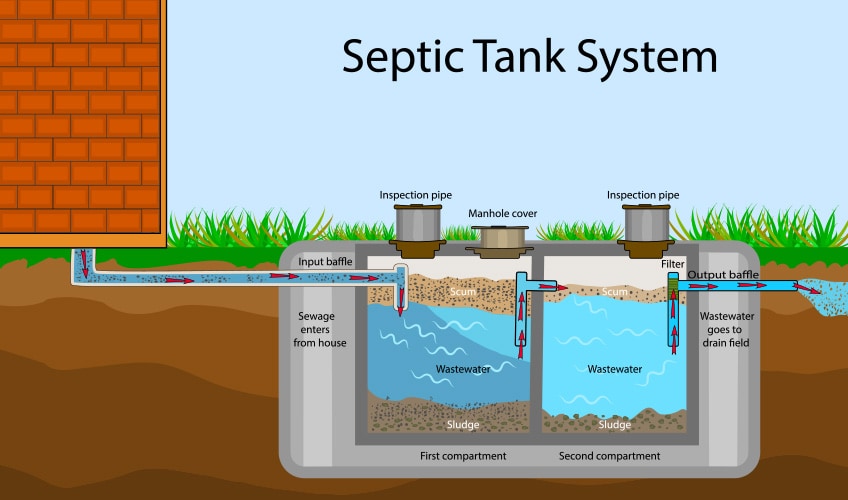Have you ever wondered how long it takes to pump a septic tank? Well, look no further! In this article, we will explore the various factors that can influence the duration of septic tank pumping. From the size of the tank to the level of sludge accumulation, we will delve into all the important details to give you a comprehensive understanding of the pumping process. So, if you’re curious about how long it really takes, keep reading to find out more!
Septic Tank Pumping Process
Maintaining and properly servicing your septic tank is crucial for the health and functionality of your entire septic system. One essential aspect of septic tank maintenance is regular pumping. Over time, solid waste and sludge accumulate in the tank, which can lead to clogs, backups, and even system failure if not addressed promptly. In this article, we will explore the septic tank pumping process, including the necessary preparation, accessing the tank, pumping the tank, and inspection and maintenance.
Preparation
Before starting the septic tank pumping process, proper preparation is crucial. This includes locating the septic tank and ensuring easy access to it. Start by determining the approximate location of your tank, which is usually found underground in your yard. This can be done by consulting the original house plans, contacting the builder, or seeking professional assistance. Once the tank is located, clear the access pathway by removing any debris, plants, or obstacles that might hinder the pumping process. Lastly, gather all the necessary equipment and tools, such as a septic tank pump, hoses, protective gear, and any other items recommended by the pumping service.
Accessing the Tank
After the necessary preparation, accessing the septic tank is the next step in the pumping process. This involves digging up the access point, which is typically a small lid or cover on the top of the tank. Use caution when digging to avoid damaging any underground utilities or structures. Once the access point is exposed, carefully remove the tank lid or cover. It is important to ensure the safety of the opening by placing appropriate barriers or warning signs to prevent accidents. Remember, septic tanks contain potentially hazardous gases, so exercising caution and following safety guidelines is crucial.
Pumping the Tank
With the septic tank access point open, the pumping process can begin. Professional pumping services use specialized equipment to efficiently remove both the liquid and solid waste from the tank. The pumping equipment is set up, connecting hoses from the pumping truck to the septic tank. The pump then starts extracting the waste, which is transported to a designated facility for treatment and disposal. During the pumping process, it is important to monitor the progress and ensure that all waste is thoroughly removed from the tank. This helps prevent any issues that may arise from leftover sludge or solid waste.
While pumping the tank, it is also an opportune time to clean the tank’s interior. High-pressure water can be used to wash down the walls and remove any remaining residue or build-up. This additional step helps maintain the overall performance and longevity of the septic system. Throughout the pumping process, the technicians should inspect the tank for any potential issues, such as cracks, leaks, or structural damage. Identifying and addressing these issues early on can prevent further deterioration of the tank and the system as a whole.
Inspection and Maintenance
Once the septic tank is pumped and cleaned, thorough inspection and maintenance are necessary. The technicians carefully examine the tank for any signs of damage or leaks. They also check the components and systems, including the inlet and outlet pipes, baffles, and the drainfield. If any repairs or adjustments are required, they are addressed promptly to ensure the proper functioning of the septic system. After completing the inspection and maintenance tasks, the tank lid or cover is reinstalled, securely sealing the tank.
Finally, the work area is cleaned up, ensuring that all equipment, tools, and debris are properly removed. The technicians take care to leave the surroundings in the same or better condition than when they arrived. Keeping the work area tidy is not only important for aesthetics but also for safety reasons. It reduces the risk of anyone accidentally falling into the open tank access point or coming into contact with potentially hazardous materials.

Factors Affecting Pumping Duration
Several factors can influence the duration of the septic tank pumping process. These factors should be taken into consideration to ensure that you have a clear understanding of the time involved and potential variations. Let’s explore some of the most significant factors influencing pumping duration.
Tank Size
The size of your septic tank plays a crucial role in determining how long it will take to complete the pumping process. Smaller tanks generally require less time, as there is less waste and sludge to be removed. On the other hand, larger tanks may take longer to empty due to their increased capacity. The volume of waste within the tank directly affects the pumping duration.
Frequency of Pumping
The frequency of septic tank pumping also impacts the overall duration of the process. Regular maintenance and pumping will prevent excessive build-up of solid waste and sludge. If your tank is pumped on a regular schedule, typically every three to five years, the pumping duration is likely to be shorter compared to a tank that has gone extended periods without pumping.
Household Water Usage
The amount of water consumed by your household can affect how quickly the septic tank fills up and, consequently, the pumping duration. A high-water usage household, such as one with numerous occupants or frequent laundry and dishwasher usage, will produce more wastewater that flows into the septic tank. This increased water volume can result in more frequent and potentially longer pumping sessions.
Number of Residents
The number of people residing in your home directly impacts the rate at which the septic tank fills up with wastewater and solid waste. More residents mean more waste being generated and disposed of, thereby increasing the frequency of required pumping. A larger number of residents can extend the pumping duration, as more waste must be extracted from the tank.
Solid Waste Accumulation
Over time, solid waste and sludge accumulate in the septic tank. The rate at which solid waste builds up can vary depending on factors such as the size of the tank, the frequency of pumping, and the household’s habits. A septic tank with a significant amount of solid waste accumulation may require additional time to ensure thorough removal during the pumping process.
Presence of Grease and Oil
The presence of excessive grease and oil within the septic tank can influence the pumping duration. Grease and oil tend to float on top of the wastewater, forming a layer known as scum. This scum layer can impede the removal of waste, requiring additional time and effort to pump out the tank completely. Regular maintenance, including grease and oil management, can help mitigate this issue.
Tree Root Intrusion
If there are trees planted near the septic tank, their roots may intrude into the tank over time. Tree root intrusion can cause damage to the tank and obstruct the pumping process. Dealing with tree root intrusion may require additional time to clear roots and ensure proper pumping.
Septic Tank Design
The design and condition of your septic tank influence the pumping duration. Older or poorly designed tanks may have limited access points, making the pumping process more time-consuming. Conversely, modern tank designs with improved access systems can reduce the pumping duration by allowing for more efficient waste removal.
Access to the Tank
The accessibility of your septic tank is also a factor in determining the pumping duration. If the tank is easily accessible, with a clear pathway for the pumping equipment, the process can be completed more quickly. On the other hand, if the tank is located in a hard-to-reach area or requires significant excavation, it may extend the pumping duration.
Experience and Efficiency of the Pumping Service
The experience and efficiency of the pumping service you choose can significantly impact the duration of the pumping process. Experienced technicians who are well-versed in septic system maintenance work more efficiently, reducing the overall time required. Additionally, using high-quality equipment and employing efficient processes further enhances the speed and effectiveness of the pumping service.
In conclusion, understanding the septic tank pumping process and the factors that influence pumping duration is essential for homeowners. Proper preparation, accessing the tank, pumping the tank, and inspection and maintenance are crucial steps in maintaining a healthy septic system. By considering factors such as tank size, frequency of pumping, household water usage, number of residents, solid waste accumulation, presence of grease and oil, tree root intrusion, septic tank design, access to the tank, and the experience and efficiency of the pumping service, you can effectively manage and maintain your septic system. Regular septic tank pumping is vital for preventing costly repairs and ensuring the longevity and efficiency of your entire septic system.

